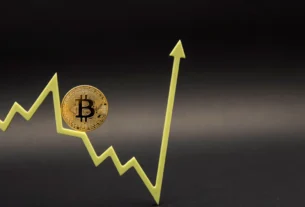According to Bitfinex’s most recent Alpha report, Bitcoin (BTC) dropped over 7% amid the macroeconomic uncertainty engulfing the markets, briefly losing the $90,000 barrier to touch $88,900 on January 13. According to the analysis, a reversal in market mood occurs at the same time as the price decline. Seven of the previous twelve Bitcoin (BTC) trading days saw net outflows from spot Bitcoin exchange-traded funds (ETFs).
Rising Treasury Yields Bitcoin’s Price
Bitcoin is under pressure from rising Treasury yields in two ways. While tighter financial conditions decrease overall liquidity, higher yields draw institutional money to bonds. Institutional investors consequently rebalance their holdings, giving bonds precedence over erratic, Bitcoin (BTC) yieldless assets like Bitcoin. Furthermore, increased borrowing costs increase the downward pressure on the price of Bitcoin by reducing inflows into speculative markets.
Because of its greater volatility and sensitivity to changes in liquidity. Bitcoin has historically responded to such changes more quickly than stocks. For instance, as seen by prior yield surges. Bitcoin frequently responds within weeks. Whereas stocks may take months to reflect higher yields. The price trend of Bitcoin is still correlated with US stocks, specifically the S&P 500 (SPX).
Regulatory Optimism and Macro Pressures
Bitcoin’s relative robustness in the face of micro-bitcoin (BTC) challenges can be ascribed to hope for possible regulatory reforms. As a counterpoint to more general risk-asset issues, market confidence has been strengthened by President-elect Donald Trump’s incoming term and the possibility of more favorable crypto policies.

Given that Bitcoin is currently trading close to crucial support at $90,000, the market is probably going to move into a range environment with consolidation phases. A difficult path ahead for risk assets is indicated by the changing macroeconomic environment, which is influenced by rising Treasury yields, hawkish Fed signals, and ETF withdrawals.
Macro Challenges and Regulatory Optimism
Bitcoin’s resiliency is in contrast to conventional stocks, however, Bitcoin (BTC) suggests that it might continue to draw interest from investors, mostly if regulatory clarity increases. However, Bitcoin owners currently have to balance navigating macroeconomic headwinds with waiting for possible policy and sentiment shift tailwinds. While Bitcoin has been relatively resilient,
The yield on the US 10-year Treasury hit 4.79%, the highest level in 14 months. By raising the opportunity cost of owning non-yielding assets and luring institutional investors to safer, yield-producing alternatives like government bonds, the increase affects Bitcoin.About the new Fed approach, the probability of rate reduction
Summary
Due to rising Treasury yields and macroeconomic uncertainties. However, Bitcoin has experienced a sharp dip, plunging more than. 7% and temporarily below the $90,000 barrier. By decreasing liquidity and raising borrowing costs, the spike. Treasury yields have pushed institutional investors into bonds and put downward pressure on Bitcoin. Compared to stocks, Bitcoin is more susceptible to these fluctuations due to its volatility. Its price movement is still linked to US stocks, especially the S&P 500.



